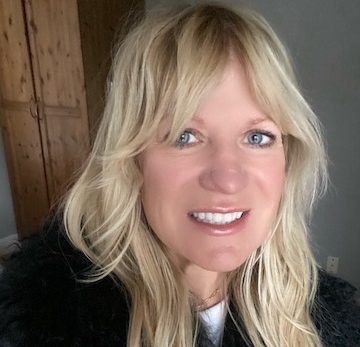Today is June 6, 2024, the 80th anniversary of the allied invasion of Normandy. The day that turned the tide of World War II. D-Day.
On April 30, 2011, I visited the D-Day beaches. My then-husband, Jim, and I were living in Paris at the time. He was a real World War II history buff, and we decided to drive up to Normandy for the weekend. I suppose he wanted to see it, to feel it, in that unspoken way that sons of soldiers want to see and feel their fathers.
I remember not being that much into it. If it were up to me, I probably would have spent that weekend wandering around Boulevard Saint Germain or sitting in a neighborhood café on Rue de Buci, lazily drinking iced Americanos. But Jim really wanted to go, so we did.
With belated apologies to my eighth-grade history teacher, I had this naïve idea of Normandy as one beach. Like you could just drive up from Paris, park your car and be there. What I’d forgotten was that the D-Day invasion actually took place over a 50-mile stretch of coastline in northwest France. And what I’d considered to be the beach, was actually just one of five. Utah. Omaha. Gold. Juno. Sword.
The seemingly poetic etymology of those names is actually less romantic than I’d imagined. Omaha and Utah were chosen at random when some American general asked two NCOs where they were from. Gold, Juno and Sword were named after three kinds of fish.
The total number of allied troops that landed on those beaches either by air or by sea was 156,111. They included soldiers from the United States, Britain, Canada, Belgium, Norway, Poland, Luxembourg, Greece, Czechoslovakia, New Zealand and Australia, plus French commandos. It was the largest amphibious assault in human history. The odds of survival: 1 in 4.
It was 11 o’clock in the morning when we parked the car and I remember thinking, OK, where’s this beach. We walked along a gravel path from the parking lot. The sun was shining. I had to admit, the setting was idyllic. I remember there were other visitors, too, and everyone laughed and chatted in that loud American way we have. Finally, all fell silent but the wind and waves.
There was a tall, stone monument punctuating the azure sky. It was etched with some of the names of the fallen. I snapped a closeup of Hahn, Hales, Halpe, Hardy, Hasty, Henley, Herbert, Hecht, Helms. We continued along the path until we were standing on a cliff overlooking the sea. And that’s when I caught my first glimpse. Nothing like the black-and-white war movies my father used to binge.
There was Omaha Beach, viewed through a violet haze of sea roses. At low tide on that day in June, troops had to cross maybe 500 yards. But from where I stood, it seemed that it might has well have been 500 miles. I remember crying.
And that’s when I saw it. Just to my left across a manicured lawn. I have no idea how I missed it before. Because it was vast as Omaha Beach itself. Only instead of sand and waves and sea roses, this land was marked by white crosses. There were white stars of David, too. About 10,000 monuments all together, lined up in perfect rows, pointing toward America.
Since I document everything, I’m surprised that I didn’t take a photo of those crosses. But the image was exposed to blinding sunlight, developed with sea water, wind and tears and is forever imprinted in my mind. A kind of silver halide alchemy performed only in the most indelible of human moments.
After that, we visited Pointe du Hoc. Another history lesson I’d long forgotten. Jim wanted to see the 100-foot cliffs that a daring battalion of Army Rangers scaled on ropes, ladders and grapples under direct enemy fire.
It was essentially a suicide mission. As one commander of the time put it, “Three old women with brooms could keep the Rangers from climbing that cliff.” They didn’t stand a chance against German artillery. Just one of the companies began the mission with 70 men. By the time they reached the base of the cliffs, there were 35. By nightfall, there were just about a dozen men left to knock out enemy strongholds at the top.
Jim and I stood together on the white gravel path that led to the cliffs. Enormous bombed-out craters long overgrown with sea grass scarred the landscape that surrounded us. I watched Jim follow the path to the edge.
There, just steps away from the sunlit gravel, were the cool, dark bunkers from which hundreds of Rangers were shot down like fish in a barrel.
Jim crouched low into the shadows of one of the bunkers, just beyond a tangle of dead bushes that looked like barbed wire, and disappeared inside.
I closed my eyes, lost in the speculative alchemy of another moment I would try hard not to forget.

